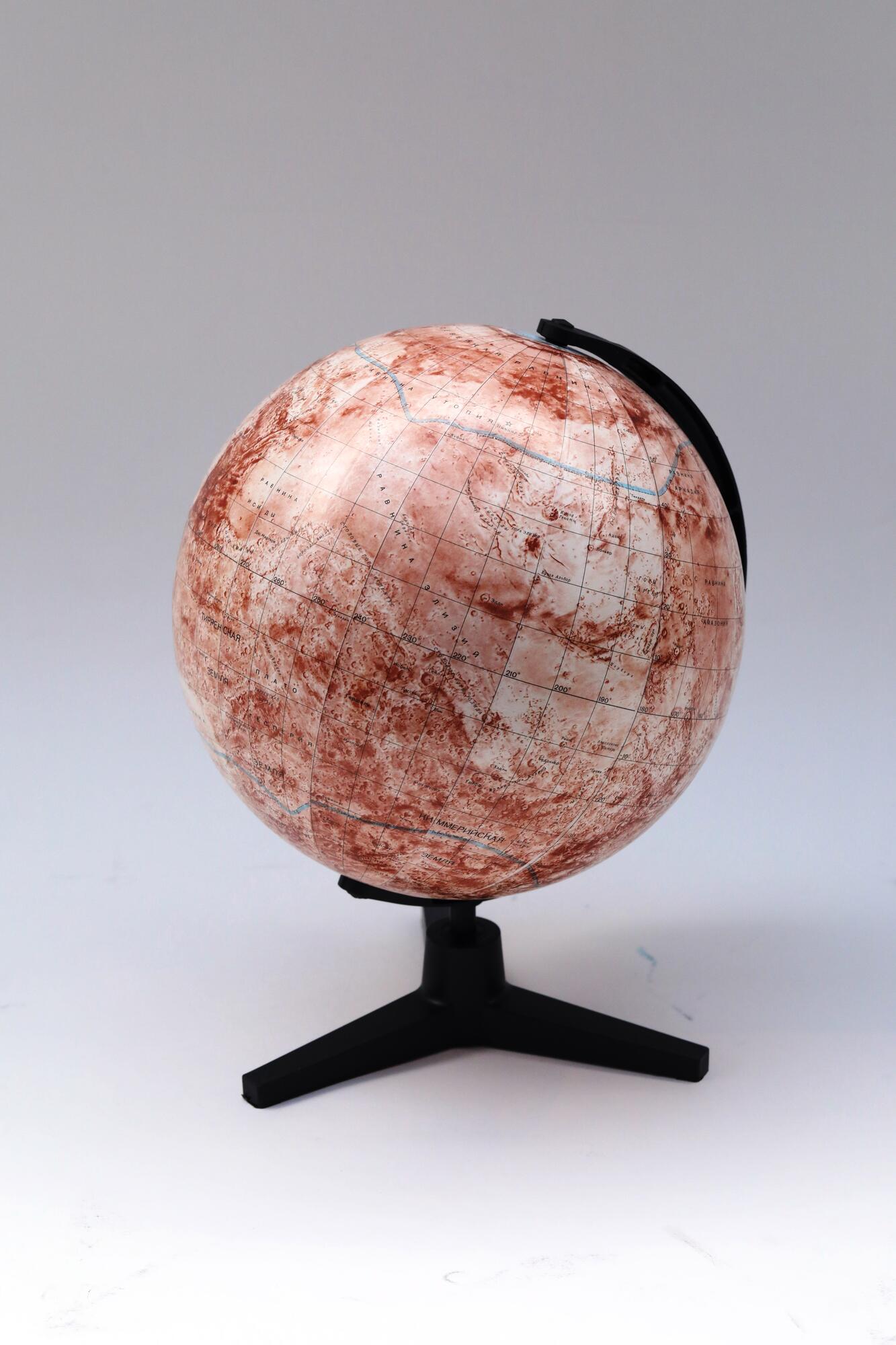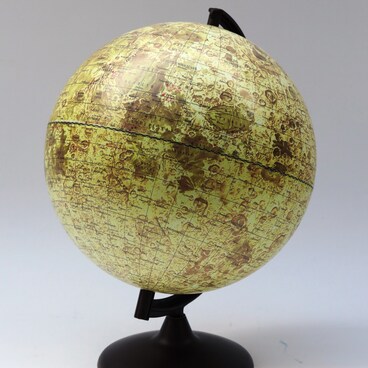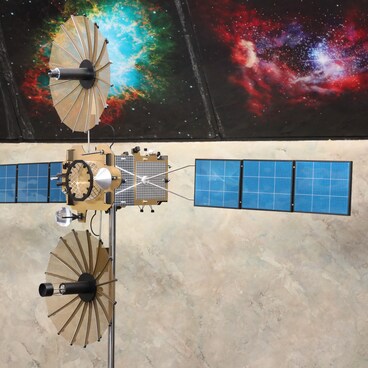The Moscow State University of Geodesics and cartography, helped with mapping the surface of the planet Mars. The rector of the University at the time was Victor Savinikh, and the exhibit was given by him to the K.E. Tsiolkovsky Museum of Aviation and Cosmonautics, when he participated in the Vyatka Cosmonautics Days.
Globe of Mars
Время создания
Second half of the XX century
Размер
33x25x25 cm
33 х 25 х 25 cm
33 х 25 х 25 cm
Техника
Machine made items
Коллекция
Выставка
1
Открыть в приложении#1
Globe of Mars
#4
#5
Mars is the fourth planet from the Sun in our Solar system. It belongs to the group of terrestrial planets. It is approximately half the size of the earth, and its mass is one tenth of the earth’s. The distance between the Earth and Mars varies between 55 and 401 million kilometers.
#6
At night Mars can be seen from the Earth with the naked eye — it is the third brightest planet, after Venus and Jupiter. With the invention of the telescope it became possible to study the surface of Mars in greater detail. By the XVII Century astronomers had created the first maps of the “red planet”, depicting ice caps at its poles and a range of topographical features.
#7
At the end of the XIX Century the Italian astronomer Giovanni Schiaparelli was the first to name specific geographic locations on Mars — the Sea of Aphrodite, the Erythraean Sea, the Adriatic Sea, the Lake of the Sun, and the Lake of the Moon. He also observed and mapped a network of “canals” on the surface of Mars. It was later established that these were simply an optical illusion, but nevertheless the idea that these might have been made artificially, and that intelligent beings lived on Mars was popular for many years.
#8
The use of Automated Interplanetary Station (AISs) to study Mars has enabled us to draw up accurate maps of its surface. Two thirds of its surface are covered with light-colored areas, which are referred to as “continents”. The remaining third is composed of darker areas, primarily in the southern hemisphere, which are referred to as seas. In the northern hemisphere there are two areas of large volcanoes — Tharsis and Elysium. At the edge of Tharsis is the highest mountain on any planet in our solar system, the Olympus Mons volcano. Olympus Mons is 27 km high, and has a diameter of 500 km. The deepest canyon in the solar system can also be found in the Tharsis region — Valles Marineris. Running 4000 km across the surface of the planet, it is up to 600 km wide and up to 10 km deep.
#9
There are currently 6 AISs among the artificial satellites orbiting Mars, as well as two that are exploring the planet’s surface. On August 6 2012 the Curiosity Mars rover landed in Gale Crater (near the south-eastern edge of the Elysium plateau). And the InSight lander has been conducting geological research at the western end of the Elysium plateau since November 2018. Both devices are operating at a longitude close to the planet’s equator.
#10
Ministry of Culture of the Russian Federation
читать дальшескрыть
00:00
00:00
1x
Globe of Mars
Время создания
Second half of the XX century
Размер
33x25x25 cm
33 х 25 х 25 cm
33 х 25 х 25 cm
Техника
Machine made items
Коллекция
Выставка
1
Открыть в приложении
Поделиться



